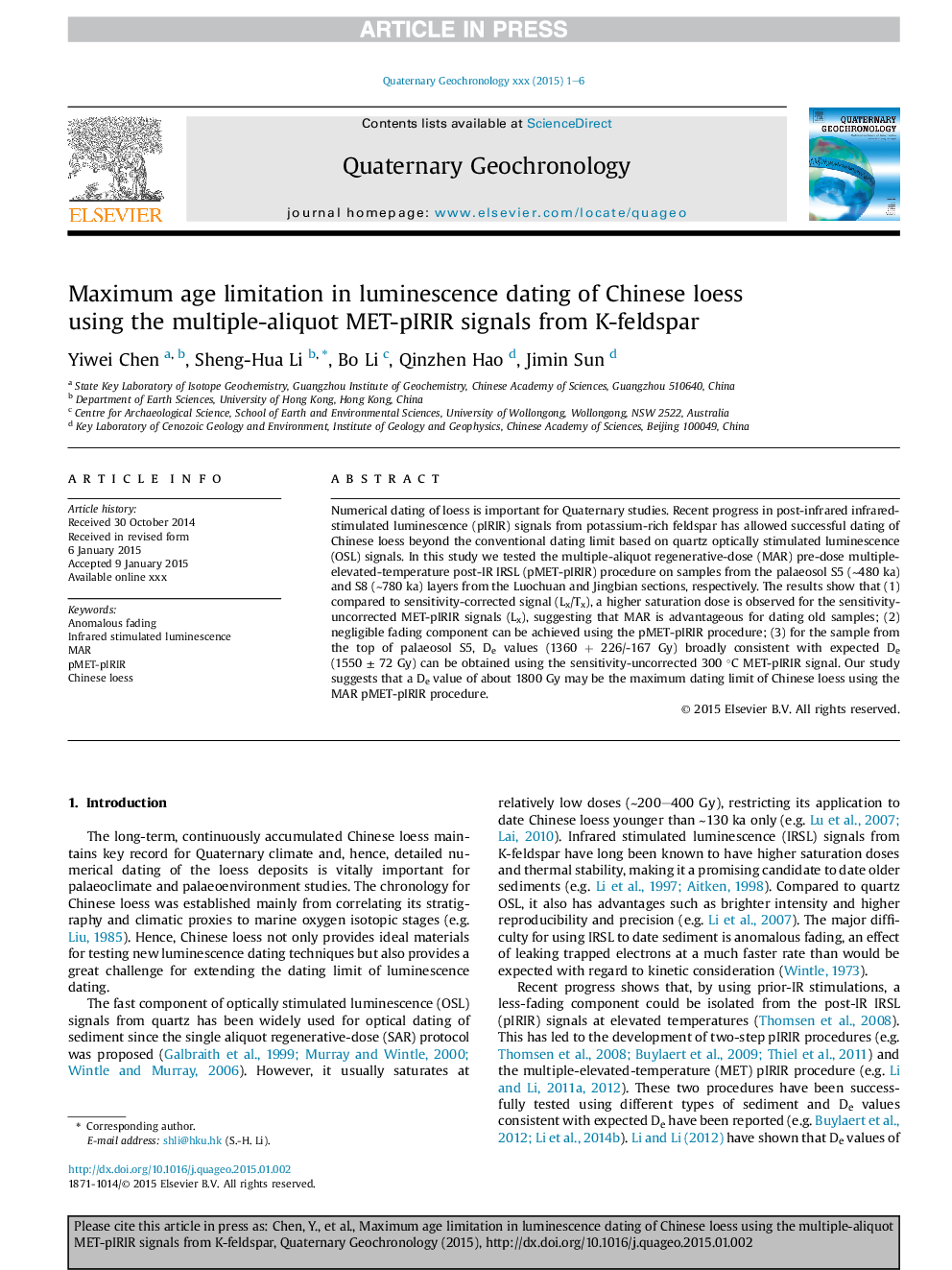| کد مقاله | کد نشریه | سال انتشار | مقاله انگلیسی | نسخه تمام متن |
|---|---|---|---|---|
| 6442543 | 1639846 | 2015 | 6 صفحه PDF | دانلود رایگان |
عنوان انگلیسی مقاله ISI
Maximum age limitation in luminescence dating of Chinese loess using the multiple-aliquot MET-pIRIR signals from K-feldspar
دانلود مقاله + سفارش ترجمه
دانلود مقاله ISI انگلیسی
رایگان برای ایرانیان
کلمات کلیدی
موضوعات مرتبط
مهندسی و علوم پایه
علوم زمین و سیارات
ژئوشیمی و پترولوژی
پیش نمایش صفحه اول مقاله

چکیده انگلیسی
Numerical dating of loess is important for Quaternary studies. Recent progress in post-infrared infrared-stimulated luminescence (pIRIR) signals from potassium-rich feldspar has allowed successful dating of Chinese loess beyond the conventional dating limit based on quartz optically stimulated luminescence (OSL) signals. In this study we tested the multiple-aliquot regenerative-dose (MAR) pre-dose multiple-elevated-temperature post-IR IRSL (pMET-pIRIR) procedure on samples from the palaeosol S5 (â¼480 ka) and S8 (â¼780 ka) layers from the Luochuan and Jingbian sections, respectively. The results show that (1) compared to sensitivity-corrected signal (Lx/Tx), a higher saturation dose is observed for the sensitivity-uncorrected MET-pIRIR signals (Lx), suggesting that MAR is advantageous for dating old samples; (2) negligible fading component can be achieved using the pMET-pIRIR procedure; (3) for the sample from the top of palaeosol S5, De values (1360 + 226/-167 Gy) broadly consistent with expected De (1550 ± 72 Gy) can be obtained using the sensitivity-uncorrected 300 °C MET-pIRIR signal. Our study suggests that a De value of about 1800 Gy may be the maximum dating limit of Chinese loess using the MAR pMET-pIRIR procedure.
ناشر
Database: Elsevier - ScienceDirect (ساینس دایرکت)
Journal: Quaternary Geochronology - Volume 30, Part B, October 2015, Pages 207-212
Journal: Quaternary Geochronology - Volume 30, Part B, October 2015, Pages 207-212
نویسندگان
Yiwei Chen, Sheng-Hua Li, Bo Li, Qinzhen Hao, Jimin Sun,